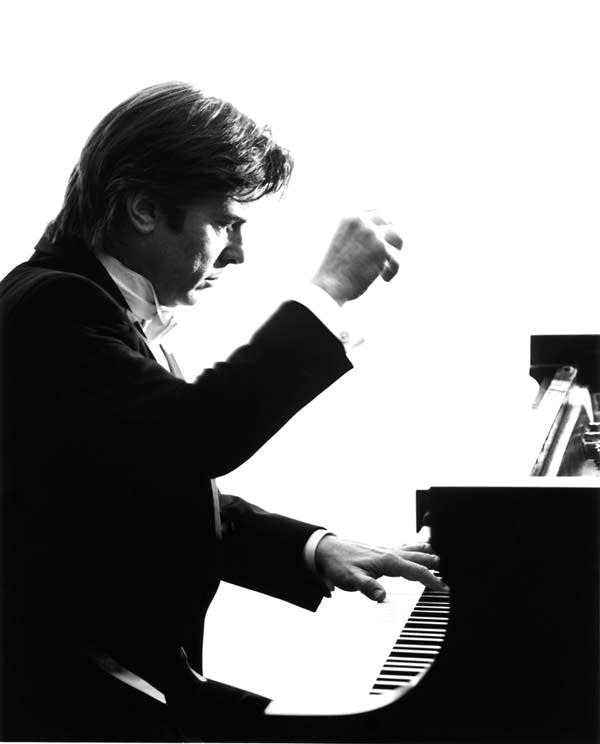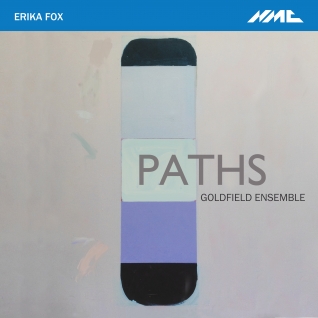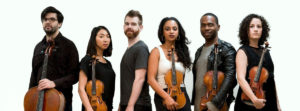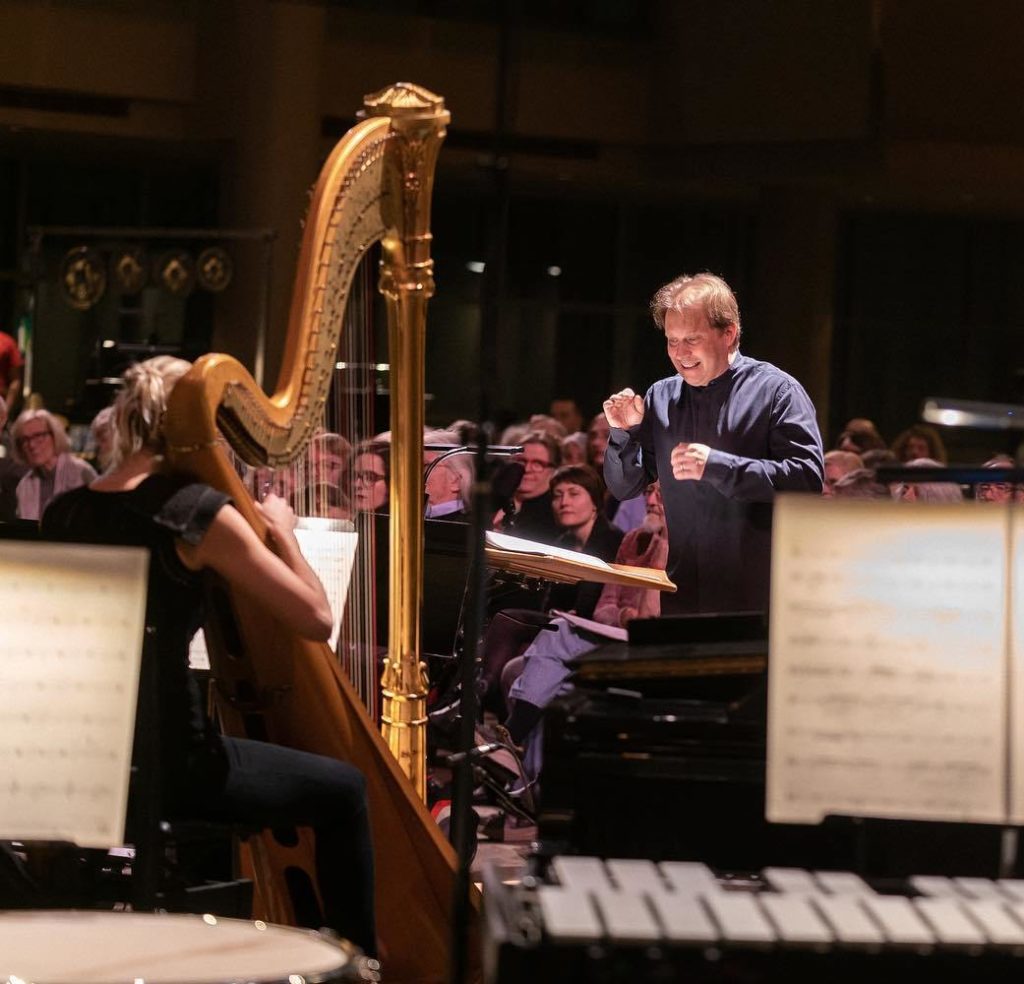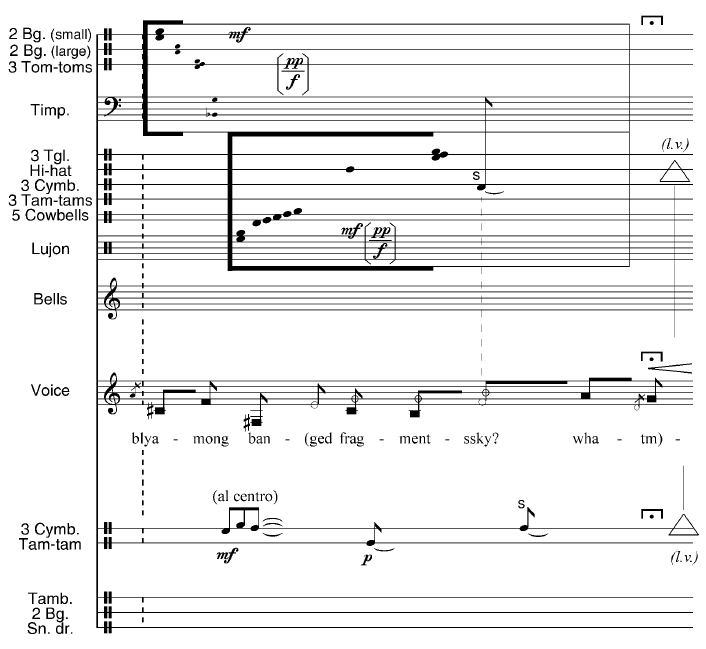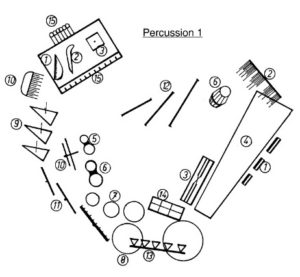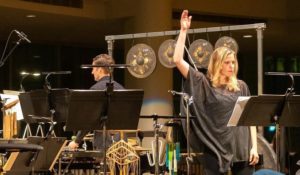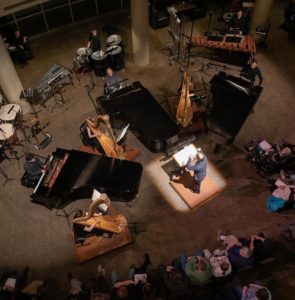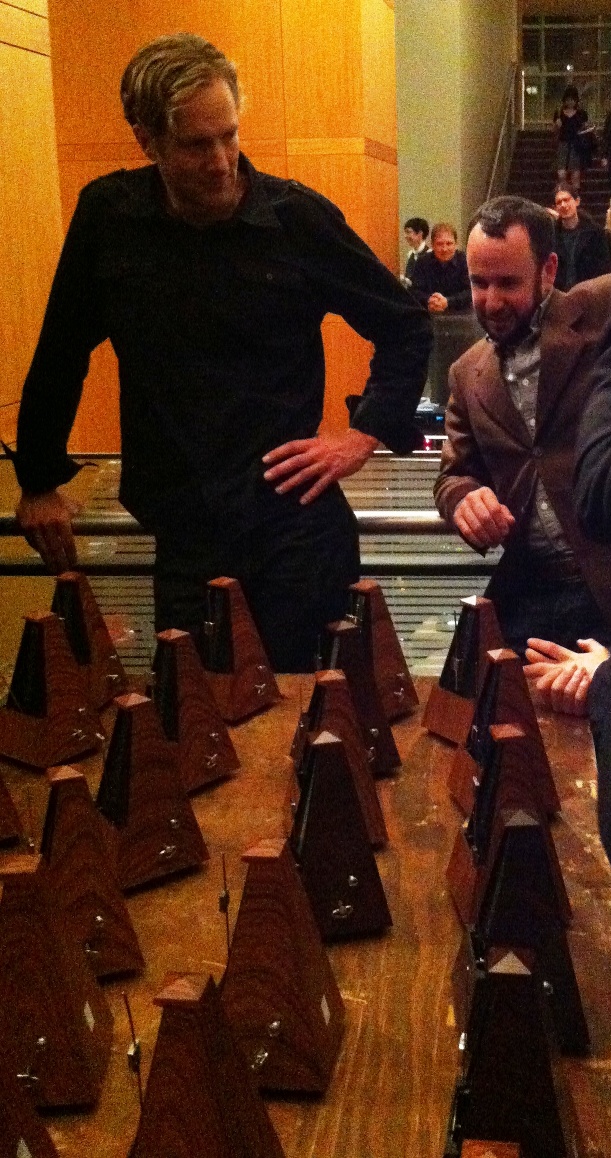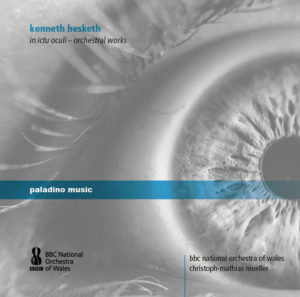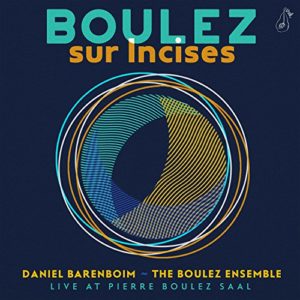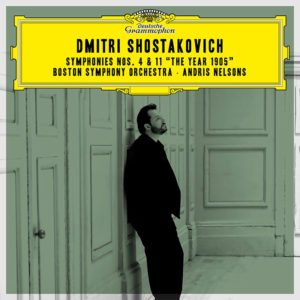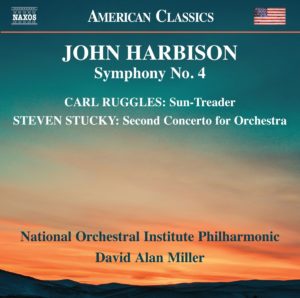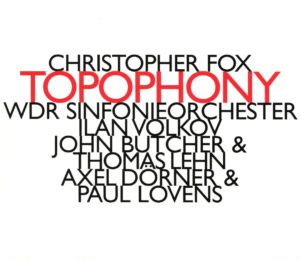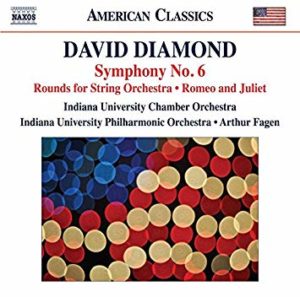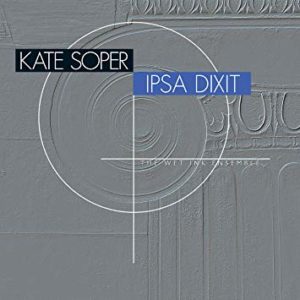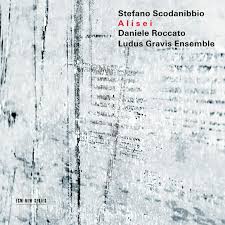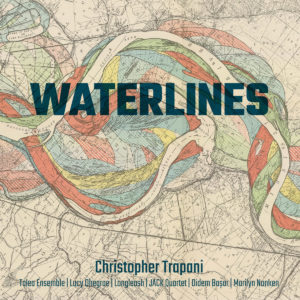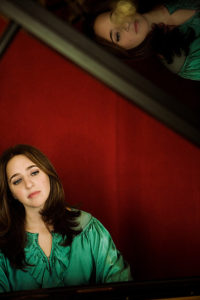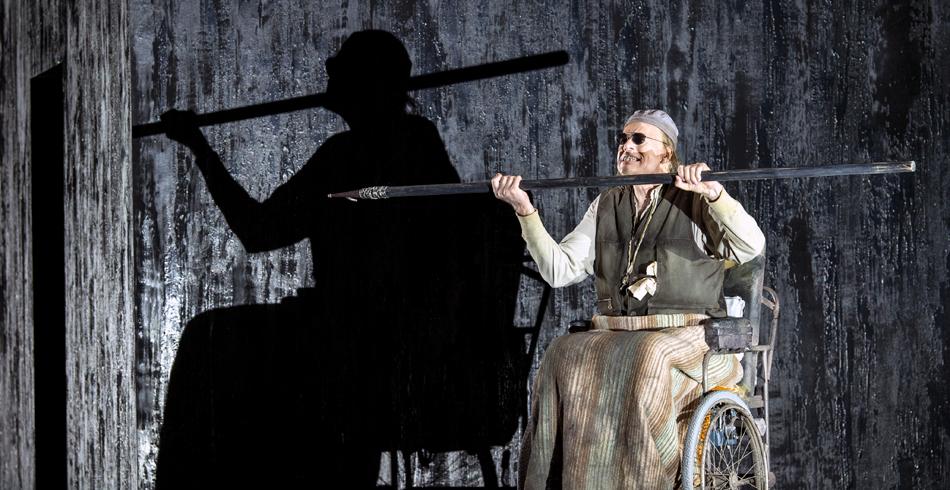
Mario Davidovsky (March 4, 1934 – August 23, 2019)
Mario Davidovsky, composer, teacher, and winner of a Pulitzer Prize in 1971 for his Synchronisms No. 6 for piano and electronic sounds, passed away peacefully last Friday at his home on Manhattan’s Upper West Side at the age of 85. The cause of death was heart failure.
Davidovsky was a pioneering figure in the burgeoning electronic music scene of the 1960s and 70s, and his pathbreaking work in combining live instrumentalists with prerecorded electronic sounds revealed exciting new possibilities in the realms of articulation, timbre, velocity, and expression. It could truly be said of Davidovsky’s series of Synchronisms that the electronic and acoustic media seemed to “learn” from each other: composers committing electronic sounds to tape and splicing musical events together could produce extraordinarily rapid, quicksilver patterns of articulation that at the time seemed beyond the limits of human performers. Sudden dynamic changes could be achieved in electronic music that also seemed to exceed the abilities of most executants. Even so, some of the finest young musicians of the time, like their forebears in previous eras, figured out how to incorporate a significant amount of these abilities into their own instrumental technique — to learn to play what formerly had seemed unplayable—, adding a new level of virtuosity that could be called upon by the composer. And Davidovsky had the magic touch when it came to introducing an element of human warmth and flexibility to the tape parts. It has often been said that in his hands this fixed electronic component, far from sounding rigid and unyielding, somehow gives the impression of “following” the live performer, similarly to the way a fine collaborative pianist follows and breathes with a singer or instrumentalist. Mario believed that the human executant was not to be supplanted, but that the things the instrument was capable of doing could be extended and enhanced.
Mario Davidovsky was born in Médanos, Argentina. His parents were Natalio Davidovsky, a general manager of an agricultural company, and Perla Bulanska Davidovsky, who taught Hebrew school and was something of a champion of social justice. She was an educated woman who engaged in scholarly biblical study, and she had a strong interest in caring for Jewish children who had been orphaned, even to the point of taking them into her home. Mario’s parents had been brought by their parents to Argentina from Lithuania in the early years of the twentieth century. Mario’s grandfathers both were rabbis, and one of them was also a Hebrew scribe. Living in a small town with many immigrants, in an observant Jewish household within a very Roman Catholic Latin American culture was critical to Mario’s development as a human being and as an artist. He developed a very strong belief in the ethical and moral component of being a composer, a belief that he worked to instill in his students for the rest of his life.
Music was an integral part of the family’s life, and Mario began taking violin lessons at the age of 7. By the time he was thirteen was already composing his own music. When he was fifteen his family moved to Buenos Aires, but he didn’t start formal composition studies until he was eighteen. He took instruction at a school modeled on the German Hochschule für Musik concept, studying with German and Austrian emigrés. Later, he attended the University of Buenos Aires, with the idea of pursuing a career in law, but in 1954 committed to composition. At about the same time he had his first compositional success, winning first prize in a competition with a string quartet. He graduated from the university, having received a solid grounding in musical theory and composition with Guillermo Graetzer and Teodoro Fuchs. He often spoke of his gratitude for the rigorous training in counterpoint that he received there. The sense of lyricism and of a through line in Mario’s music is pervasive, whether in the sparse textures of the early electronic pieces or the more opulent sonorities of Shulamit’s Dream.
Aaron Copland, who had for a long time had an interest in cultivating ties with Latin American composers, invited Davidovsky to Tanglewood in 1958 and introduced him to Milton Babbitt, who in turn introduced him to the world of electronic music, and who also was about to embark on a new venture, the Columbia-Princeton Electronic Music Center, along with Otto Luening and Vladimir Ussachevsky. In 1960, Mario moved permanently to the United States, settling in New York City. In the electronic music studio at Columbia, he familiarized himself with the equipment and began creating his first electronic compositions, and later assisted Edgard Varèse in preparing a new version of the tape part for Déserts. He often said that his early musical experiences had not prepared him for the daunting challenges of the new medium, that — as he put it — “nothing I know counts.” In a very real way it certainly was true: he was working with oscillators that were notoriously difficult to keep in tune, splicing many bits of tape together to create a few seconds of music, and having to build each individual sonority from the ground up, so to speak. The attack, steady state, and decay of the sound, natural and unique to every traditional instrument, had to be created anew for each piece; in effect he was creating the instrument itself. All of this taught him valuable lessons that would radically alter the way he thought about writing for conventional media and ensembles. His concept of orchestration was forever radically transformed by his experiences in the tape studio.
After mastering the medium of instrument(s)-plus-electronic sounds, he took a break from it for a while and applied what he had learned from the new technology to works for acoustic instruments and voices, which gave rise to a significant flowering of vocal music, much of it based on Biblical or Jewish-themed texts. In 1975 he created the first work of his to utilize a biblical text with which he had been obsessed since he was a youth: The Song of Songs (in Hebrew, Shir ha-Shirim). The resulting cantata, Scenes from Shir ha-Shirim, for four vocal soloists and chamber orchestra, brilliantly connects the tangy sonorities of Medieval and Middle Eastern musical traditions, and the weird composite instruments he fashions using regular Western classical instruments (oboe, clarinet, strings, piano, percussion) easily remind one of similar dazzlingly bizarre sonorities that he was able to create in the studio. Years later, in memory of his mother, he composed another very different setting of texts from the Song of Songs, Shulamit’s Dream, for soprano and large orchestra. Hearing the two settings in succession is rather like hearing the same text set by two different composers: one from the late Middle Ages, the other from the late nineteenth or early twentieth century. And yet it’s still Mario’s voice we’re hearing.
After an extensive hiatus, Davidovsky returned to the electronic studio and the Synchronisms series, completing four more works for electronics with, respectively, violin, guitar, clarinet, and double bass.
Davidovsky was the director of the Electronic Music Center from 1981 until 1994, taught at various times at the University of Michigan, Yale University, and Manhattan School of Music, and served on the faculties of City College of New York, Columbia University, and Harvard University. In 1982 he was elected a member of the American Academy of Arts and Letters.
Davidovsky is survived by his son, Matias; his daughter, Adriana; his sister, Luisa Paz, and three grandchildren. His wife, Elaine Joyce Davidovsky, died in 2017.
When Mario spoke of the purpose of art and the ethical responsibility of the artist, he summarized it very beautifully as reflecting “the transcendental, profound wish that someone is served.” Thank you, Mario, for serving us all so generously.
- Hayes Biggs
